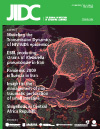Approach to Pandemic 2009 influenza: first report from a main referral hospital for Pandemic H1N1 influenza care in Iran
DOI:
https://doi.org/10.3855/jidc.1195Keywords:
Oseltamivir, influenza A/H1N1, seasonal influenzaAbstract
Introduction: Pandemic H1N1 influenza A (pdmH1N1) was a major health threat worldwide.
Methodology: A prospective cross-sectional study was conducted at Imam Khomeini Hospital in Iran. Cases of suspicious pdmH1N1 patients referred to the emergency ward of the hospital were enrolled in the study, regardless of whether the final location of treatment was the community, the hospital ward, or the intensive care unit. Oseltamivir was administered within three hours of the patient's admission. The median length of stay for hospitalized patients was 3 days.
Results: Gastrointestinal symptoms (nausea [164/434; 37.8%] and vomiting [98/434; 22.6%]) were the most common adverse reactions to oseltamivir in the study population, followed by dizziness (74/434; 17.1%). Out of 434 patients, 209 (48.2%) were treated in the community, 201 (46.3%) were admitted to the general ward in the hospital, and 24 (5.5%) were admitted to an ICU.
Conclusions: This study provided insight on the effectiveness of oseltamivir in treating pandemic influenza A, as well as possible adverse reactions to the drug. The study further drew attention to a variety of pdmH1N1 complications, in particular secondary bacterial pneumonia. We also determined that 2009 influenza A (H1N1) infection-related critical illness and mortality affected fewer elderly than younger patients. Additionally, it was shown that our approach to patients with suspected Influenza A/H1N1 virus in our hospital was compatible with World Health Organization pandemic flu guidelines in our country.
Downloads
Published
How to Cite
Issue
Section
License
Authors who publish with this journal agree to the following terms:
- Authors retain copyright and grant the journal right of first publication with the work simultaneously licensed under a Creative Commons Attribution License that allows others to share the work with an acknowledgement of the work's authorship and initial publication in this journal.
- Authors are able to enter into separate, additional contractual arrangements for the non-exclusive distribution of the journal's published version of the work (e.g., post it to an institutional repository or publish it in a book), with an acknowledgement of its initial publication in this journal.
- Authors are permitted and encouraged to post their work online (e.g., in institutional repositories or on their website) prior to and during the submission process, as it can lead to productive exchanges, as well as earlier and greater citation of published work (See The Effect of Open Access).








